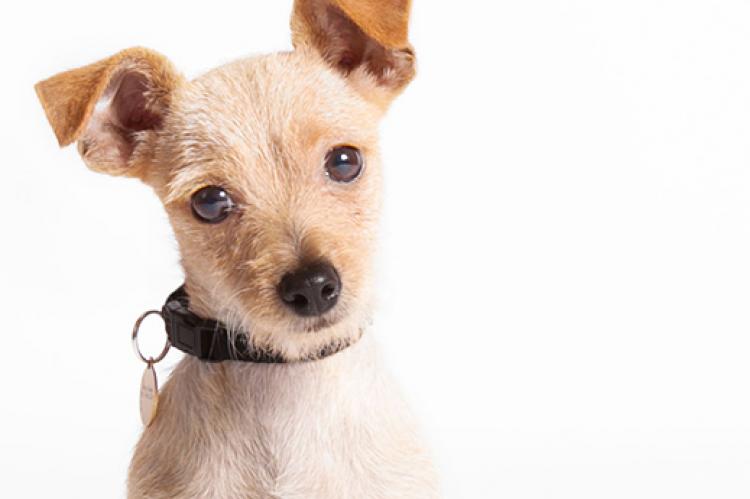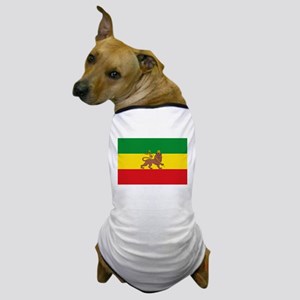If you’re looking for an usual or unique dog name, then you’ve come to the right place! What better inspiration than our own solar system, when it comes to dog names?
Connect with a verified veterinarian in minutes. Licensed vets are available 24/7 to answer your questions. No need to worry about your furry family member.
If you’re an astronomer, an astrophysicist, an astronaut, or just a person who enjoys stargazing, then why not consider name your dog based on the planets and moons in our solar system?
Outer space has long been a draw for humans. We wonder what’s out there, dream of exploring the stars, meeting aliens, and more. For this reason, we’ve made this article about gravitating bodies close to Earth.
Here’s our list of dog names based on the planets and moons near us!
1). Pluto: this is a dwarf planet that is close to the Kuiper Belt, which is an area that’s filled with icy bodies and other dwarf planets. Pluto is past Neptune and is very small. However, it does have a moon named Charon.
2). Jupiter: is the largest planet in our solar system. It’s about 2 times the size of all the other plants combined, and has a large red spot, which is a storm that’s been raging for centuries. The storm is larger than our planet.
3). Nix: is one of two moons that orbit Pluto. This small moon is only about 20-70 miles across! This might be a great name for a small dog.
4). Mars: is the fourth planet from the sun, and is a dusty, cold place that more resembles a desert with dry mountains, and it has a very thin atmosphere.
5). Thyone: this is a small satellite that has an irregular shape, and it belongs to Saturn. Not much is yet know about this satellite’s surface; however, there are mountainous areas that are close to the eastern and western hemispheres.
6). Titan: is Saturn’s largest moon and one of the most exception in the solar system. This is because it is the only moon that has an atmosphere; it also has liquids that form rivers, lakes and seas. This moon is larger than Mercury.
7). Neptune: is a dark, cold place that’s whipped by supersonic winds. This ice giant is the 8th and most distant planet in the solar system. It’s more than 30 times farther from the sun than our planet. And it’s the only planet that’s not visible to the naked eye.
8). Atlas: is another moon that orbits Saturn and is found on the outer edge of the planet’s ring. It has a very strange shape; in fact, it resembles a flying saucer. This is a very small moon that is only about 9.4 miles wide.
9). Mab: this is a small moon that orbits Uranus. This moon was so small that it was missed by Voyager 2 as it passed by. The moon was found by a telescope on the ground in 2003. This would be a really cute name for a girl dog.
10). Stephano: this moon was discovered in 1999 from the Mauna Kea Observatory in Hawaii. This moon is about 20 miles across, and it’s dark. It orbits Uranus in the opposite direction of the other moons that orbit that planet.
11). Styx: was first discovered in 2012e and is one of the tiny moons of Pluto. This moon is about 6-15 miles wid.
12). Prometheus: is another of Saturn’s moons, and is about 26.8 miles wide. It doesn’t have as many craters as Saturn’s other moons, and it’s thought the planet is icy and porous.
13). Carpo: is one of the moons that orbits Jupiter and takes about 456 Earth days to complete one orbit about the giant planet. Carpo is named after one of three Athenian goddesses of the flowers of spring and fruits of summer and autumn.
14). Kale: is a satellite in orbit around Jupiter and is part of a group of moons that orbit Jupiter in the opposite direction. This moon’s about 0.6 miles across and is about 14.4. million miles from Jupiter. It takes about 729 Earth days to complete one orbit.
15). Tarvos: is in orbit around Saturn and is small with a radius of 4.7 miles. The moon is about 11.4 million miles away from Saturn and takes about 926 Earth days to make one orbit.
16). Earth: is our home planet and is the third planet from the sun. It’s the fifth largest planet in our solar system and is the only planet to have liquid water on the surface. The name of our planet comes from a Germanic word that means “the ground.”
17). Themisto: orbits Jupiter and is a small moon, with a radius of about 2.5 miles. It’s about 4.5 million miles from the planet and takes about 130 Earth days to make one full orbit.
18). Oberon: this is the second largest moon that orbits Uranus. It was first discovered back in 1787 by William Herschel. The moon is heavily cratered and is half ice and half rock.
19). Puck: was discovered in 1985 in images sent by Voyager 2 on a flyby of Uranus. This moon has a diameter of about 90 miles and orbits the planet in one Earth day.
20). Phobos: first discovered in 1877 by Asaph Hall, this moon was nearly shattered by a giant impact crater. It’s filled with thousands of meteorite impacts and is on a collision course with Mars. This is one of Mars’ largest moons and it orbits the planet about three times a day.
21). Uranus: is called the “sideways planet” because it happens to rotate on its side. It was discovered in 1781 by William Herschel and was the first planet found using a telescope. It took two years for this body to be called a new planet.
22). Ferdinand: is a small, dark moon that orbits Uranus. The moon was named for the son of Alonso, King of Naples in William Shakespeare’s play The Tempest.
23). Triton: was discovered in 1846 by William Lassell, a British astronomer. This is the largest moon of Neptune and is unique because it’s the only large moon in our solar system that’s orbit runs in the opposite directly to its planet’s rotation. This is called a retrograde orbit.
24). Ymir: is a moon that orbits around Saturn, and it takes about 1,316 Earth days just to make one orbit of the planet. This moon has a radius of about 5.6 miles and is 14.3 million miles away from Saturn.
25). Kerberos: was discovered in 2011 by a team using the Hubble Space Telescope. This moon orbits Pluto and is very small and seems to have a reflective surface. This moon has a very irregular shape, which scientists have said could have been caused by the collision of two smaller objects.
26). Ariel: is a moon in orbit around Uranus and is one of the planet’s larger moons. It’s thought the moon is mostly comprised of water ice and silicate rock. And carbon dioxide has also been detected on the moon.
27). Ophelia: is one of the smallest of Uranus’ moons.
28). Hydra: is another of Pluto’s moons and is about very small.
29). Bianca: is a moon that orbits around Uranus. It’s size has not been measured successfully. However, the moon seems to be made of carbon-rich material that’s very dark.
30). Luna: is the name of our planet’s one and only moon. The moon helps keep our planet stable, so it doesn’t wobble, which also works to keep our climate more or less stable. The moon is about 240,000 miles from the Earth, and it has a very thin atmosphere. Its surface is full of craters and impacts.
31). Elara: was discovered in 1905 by Charles Dillion Perrine and is the eighth largest moon that orbits Jupiter. It has a means radius of 26.7 miles.
32). Himalia: this is another moon discovered by Charles Dillion Perrine and is the fifth largest moon orbiting Jupiter. It’s about 7.1 million miles from the planet and takes about 251 Earth days to orbit Jupiter.
33). Rhea: is one of Saturn’s moons, and has a radius of about 475 miles. This is a very cold place and its face is always turned toward Saturn. The moon is made of ice and rock.
34). Dione: is another of Saturn’s moons, and is about 349 miles in radius. This moon is about 234,500 miles from the planet and has an average temperature of -304 F.
35). Pandora: is shaped a bit like a potato and is in orbit around Saturn.
36). Amalthea: this moon is in orbit around Jupiter.
37). Kari: is another moon that orbits Saturn and has a mean radius of 1.9 miles. It’s about 13.7 million miles from the planet and take about 1,231 Earth days to make one orbit.
38). Titania: is the largest moon of Uranus.
39). Miranda: is another moon of Uranus and looks like it was put together from different parts.
40). Cressida: is another moon in orbit around Uranus.
41). Larissa: is a small moon in orbit around Neptune.
42). Namaka: is one of the two moons of the dwarf planet (near Neptune) Haumea.
43). Despina: is a tiny moon near Neptune.
44). Galatea: is another of Neptune’s tiny moons.
45). Phoebe: is a moon that orbits Saturn.
46). Leda: is a small satellite in orbit around Jupiter.
47). Portia: is a small and very fast-moving moon around Uranus.
48). Juliet: one of the smaller moons of Uranus.
49). Cyllene: is a satellite that orbits Jupiter.
50). Haumea: is a dwarf planet that is located in the Kuiper Belt, which is beyond Neptune.
There you have it! We hope you’ve enjoyed this article, and that you’ve found the best name for your dog!
Connect with a verified veterinarian in minutes. Licensed vets are available 24/7 to answer your questions. No need to worry about your furry family member.

Julie
Julie is a graduate of the University of North Carolina, Wilmington, where she studied Animal science. Though contrary to the opinion of her parents she was meant to study pharmacy, but she was in love with animals especially cats. Julie currently works in an animal research institute (NGO) in California and loves spending quality time with her little cat. She has the passion for making research about animals, how they survive, their way of life among others and publishes it. Julie is also happily married with two kids.
Review symptoms, medications & behavior to keep your pets healthy with a Vet Online in just minutes.
Ask a Vet Live Now



